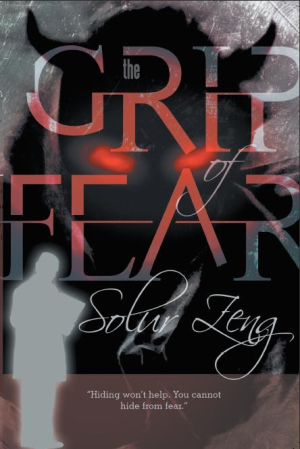The Grip of Fear
The Grip of Fear is teen author Solur Zeng’s second novel, following the pattern of The Pilgrim’s Progress by personifying emotions and turning them into antagonists.
Like his father, Luke is an inventor, and it is his life’s destiny to finish his father’s work. His ability to sense feelings leads to an unexpected explosion of emotion in his city. Luke and his best friend Zack use their inner senses to track down and identify hosts whose souls have been tainted. What they discover is that Fear, who has assumed a “humanoid cloak,” has sinister plans to bring the entire city under his control. Even the king has fallen into negativity. “No matter what,” says Luke, “I must rid this city of all its bad emotions.”
The Grip of Fear has some features of a great story, but it is unpolished. There are clever anagrams that an attentive reader will enjoy matching to their corresponding emotions, like “Thea” being “Hate” or “Lisa Zens” being “Laziness.” And the symbolism of emotions being personified would make for an excellent classroom discussion. However, the characters lack depth. Zack, for example, is just a shallow foil for Luke without having an actual personality of his own. Furthermore, although its ending is strong, The Grip of Fear fails to deliver a plausible premise that would allow a reader to believe in emotions becoming personified without also causing an entire city to fall into chaos.
As for character development, Luke experiences little emotional growth beyond coming to grips with his father’s untimely death, which is both expected and somewhat trite. Considering that the author is only fourteen years old, however, he’s done a remarkable job of planning out the purpose of each character, deciding how the characters interact, and setting up adventures for them.
It is difficult to get a feel for the world in which this story takes place because of its mix of conflicting elements. For example, archers and swordsmen guard the city’s old-fashioned castle, yet machines are everywhere, including mechanical doors, watches, and arm collars that deliver electric shocks. Also, the Night Sweepers ride motorcycles instead of horses, and magnetic pulses can cripple the castle’s light bulbs in one blow. In fact, when Luke first eliminates King Ivan’s lighting system, the king immediately calls for candles, an old-fashioned solution, instead of a flashlight, the more modern and expected one. Rather than blending into a logical new world, these elements create confusion and a sense of vagueness about the scenery.
It is also difficult to identify a target audience for The Grip of Fear. Although the two main characters are men in their early twenties, they behave like teenagers, saying things like, “You sound like my mom,” or eating twenty-five waffles for brunch. Still, with its inspirational ending, it is possible that teenagers will enjoy a story written by a peer, especially if they like manga or the thrill of defeating supernatural enemies.
Reviewed by
Emily Asad
Disclosure: This article is not an endorsement, but a review. The publisher of this book provided free copies of the book and paid a small fee to have their book reviewed by a professional reviewer. Foreword Reviews and Clarion Reviews make no guarantee that the publisher will receive a positive review. Foreword Magazine, Inc. is disclosing this in accordance with the Federal Trade Commission’s 16 CFR, Part 255.

